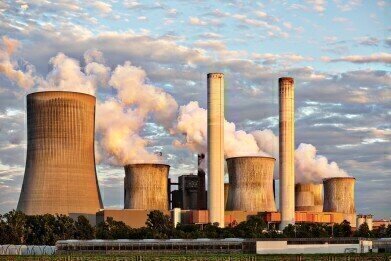Water/Wastewater
What Are the Biggest Environmental Concerns? - Pollution
Oct 28 2018
To raise awareness of the biggest environmental concerns for 2019, we’re giving you a complete overview of the top 5 concerns. In our 6-part series, we will take a closer look at biodiversity, water, deforestation, pollution and climate change.
Environmental concern number 4 is possibly the biggest threat. Pollution can cause many of the other environmental concerns we have discussed, such as water and biodiversity issues. It comes in many different shapes and sizes, all impacting the environment negatively. Keep reading as we delve into the complex, damaging world of pollution…
What are the different types of pollution?
There are 7 main types of pollution affecting our environment:
Air Pollution
The contamination of the natural air with different pollutants, such as fumes and chemicals. Air pollution can cause a range of harmful effects, including increased rain acidity, a plethora of health conditions and a significant contribution to global warming.
Water Pollution
The contamination of our water supply with chemicals, bacteria or plastic waste. Oil leakage is one of the most common forms of water pollution. For more about water pollution, take a look at part 2 of this series.
Soil Pollution
Also known as land pollution, this is the contamination of the soil that prevents the growth of natural life. Non-sustainable farming, hazardous wastage and mining all contribute to the pollution of the earth’s soil.
Noise Pollution
Loud noises, created by human activity, can disrupt the living standards of those nearby. Excessive noise pollution can lead to temporary or permanent hearing loss and can disturb nature in the affected area.
Radioactive Pollution
The most dangerous form of pollution for the earth, radiation can lead to mass extinction of ecosystems, nature and even humans. Radioactive pollution has increased rapidly recently with the rise of nuclear and atomic physics.
Light Pollution
The obtrusive over illumination of a certain area, that interferes with astronomical observation. If, for instance, you can’t see the stars from your local area, chances are you’re affected by light pollution.
Thermal Pollution
The increase of temperature in a particular area over time. This is often a direct result of air pollution and the release of carbon gasses. For more information about thermal pollution, check out part 5 of our series on climate change.
What can we do to help?
All forms of pollution are interlinked, impacting on each other and the environment as a whole. So, tackling the issue can appear daunting for one individual. But, by working together, we can make a huge difference to our environment and those living within it.
Even the slightest changes, such as reducing water wastage, avoiding littering and walking more can make huge differences. To find out more about pollution, specifically in water, check out the article, ‘Sensitive determination of iron in drinking water, mineral water, groundwater, and spring water using rapid photometric tests’.
Digital Edition
IET 34.2 March 2024
April 2024
Gas Detection - Biogas batch fermentation system for laboratory use with automatic gas analysis in real time Water/Wastewater - Upcycling sensors for sustainable nature management - Prist...
View all digital editions
Events
Apr 30 2024 Melbourne, Australia
Apr 30 2024 Birmingham, UK
May 03 2024 Seoul, South Korea
May 05 2024 Seville, Spain
May 06 2024 Minneapolis, MN, USA


















